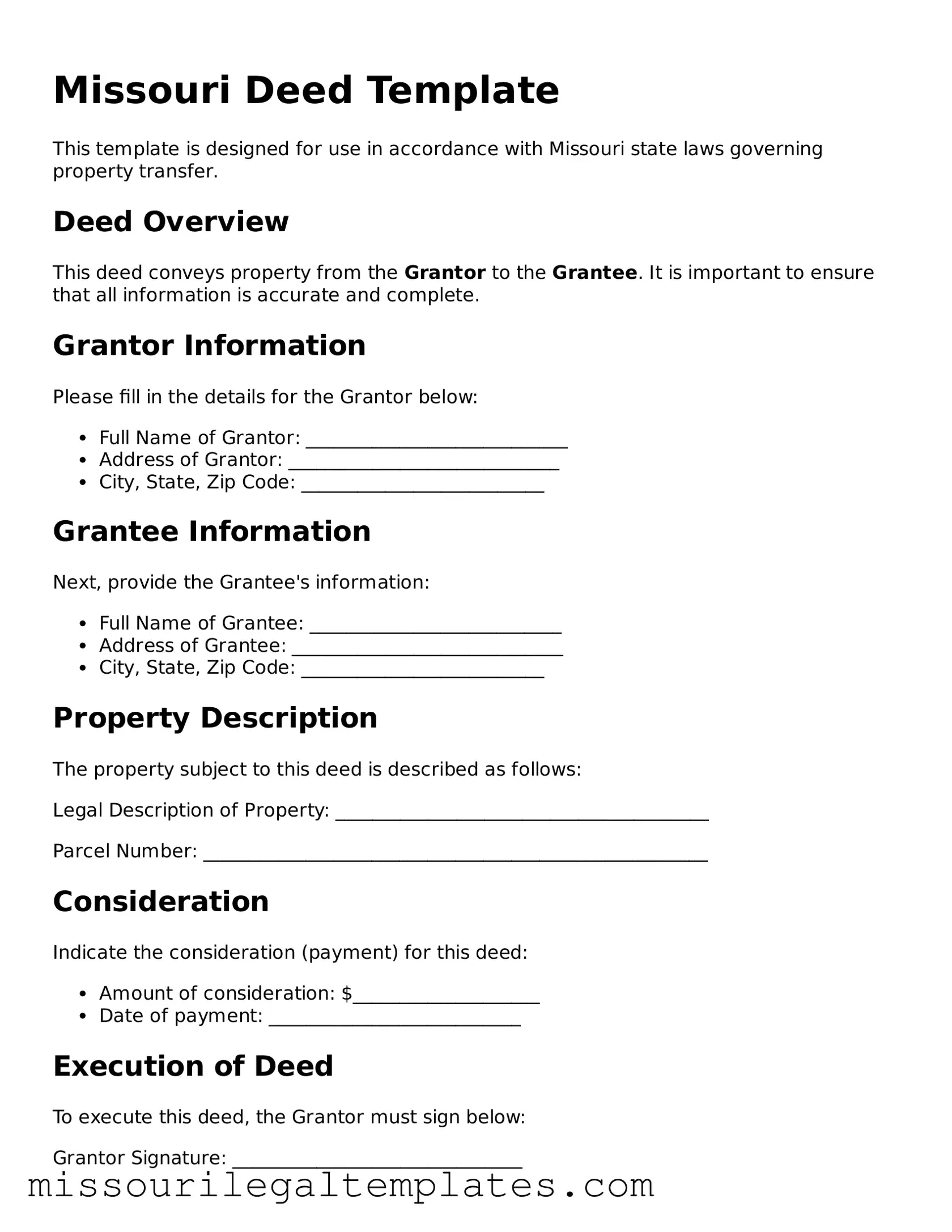Missouri Deed Template
This template is designed for use in accordance with Missouri state laws governing property transfer.
Deed Overview
This deed conveys property from the Grantor to the Grantee. It is important to ensure that all information is accurate and complete.
Grantor Information
Please fill in the details for the Grantor below:
- Full Name of Grantor: ____________________________
- Address of Grantor: _____________________________
- City, State, Zip Code: __________________________
Grantee Information
Next, provide the Grantee's information:
- Full Name of Grantee: ___________________________
- Address of Grantee: _____________________________
- City, State, Zip Code: __________________________
Property Description
The property subject to this deed is described as follows:
Legal Description of Property: ________________________________________
Parcel Number: ______________________________________________________
Consideration
Indicate the consideration (payment) for this deed:
- Amount of consideration: $____________________
- Date of payment: ___________________________
Execution of Deed
To execute this deed, the Grantor must sign below:
Grantor Signature: _______________________________
Date Signed: ____________________________________
Witness Information
It is advisable to have a witness sign the deed:
Witness Signature: ________________________________
Date: ____________________________________________
Notary Acknowledgment
The following section is for notarization:
State of Missouri
County of ________________________
On this _____ day of __________, 20__, before me, a Notary Public, personally appeared _____________, known to me (or proved to me on the oath of __________) to be the person whose name is subscribed to the within instrument, and acknowledged to me that he (or she) executed the same.
Notary Public Signature: _________________________
My Commission Expires: _________________________
